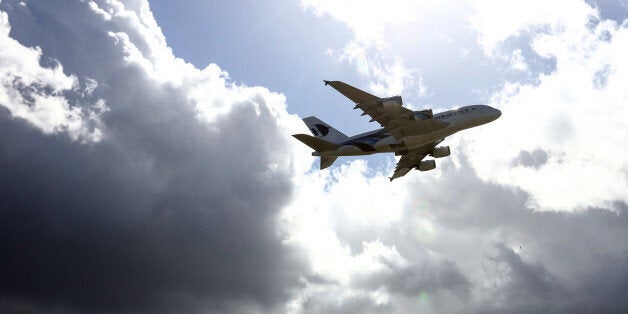
My American students could not believe how long it takes in Britain even to agree on the first step of creating additional runway capacity, which is deciding on where to build it. This is partly an indictment of the long-range planning failures of the UK. Not only is there a backwards-looking cultural obsession with the Second World War, but so much British infrastructure continues to date from then, not least the airfields. Turning one of these into Heathrow Airport (Heathrow) in 1946 arguably made sense at the time, but successive governments subsequently failed to plan for future demand, hence its current constrained, air-polluting position in a West London that has expanded to surround it.
Heathrow has nonetheless been a remarkable success despite its capacity constraints and has long been a major international hub. Retaining such a hub - albeit not necessarily at Heathrow - has therefore been a repeated concern for British governments looking at how to expand runway capacity. This is not least in light of the rise of international competitor airports at Amsterdam Schiphol, Paris Charles de Gaulle or Frankfurt Airport, each of which has considerably more runway capacity than Heathrow. Governments have, however, been remarkably unsuccessful at working out how to provide commensurate additional runway capacity in Britain.
This is despite successive attempts dating back to the 1960s in which options and alternatives, from Maplin Sands to RAF Manston, were considered. For instance, the range of possibilities covered in the Tony Blair government's The Future of Air Transport 2003 White Paper only finally resulted in a decision in 2009 when Gordon Brown went for expansion at Heathrow. David Cameron opposed this in Opposition, but then three years later as Prime Minister he set up an 'Airports Commission' under Sir Howard Davies. Their terms of reference, because they focused on the primacy of maintaining a major international hub airport, pointed to a decision for Heathrow expansion. That was indeed what Sir Davies recommended and Cameron's successor duly endorsed.
My American students also noted the connection between the centralisation of decision-making and its extreme slowness in this area of policy. This is partly because centralisation politicises the decision and remits it to figures who are concerned to avoid unpopular short-term consequences. Setting up the 'Davies Commission' was an attempt to provide an expert-led, evidence-based solution instead - one which failed.
Centralisation has also led to a narrow focus on particular options. The past 40 years of policymaking has consisted of governments always treating a Heathrow expansion as the default option while still acknowledging the many problems and at least going through the exercise of looking at alternatives in South-East England, however as Gordon Brown and Theresa May have shown, they always seem to come back eventually to that default option. The problem is that it is likely to end up mired in litigation and cost-overruns, which is partly why they try to find alternatives in the first place. It is also a short-term fix. Sir Davies, after all, recommended legislation to make it clear that Heathrow would not be allowed to expand beyond three runways.
Furthermore, the government rejected an option for expansion, the Heathrow hub scheme to extend the northern runway that would have been cheaper, quicker and less environmentally-costly to deliver. They were presumably won over by lobbying from Heathrow and its Spanish owners, for whom the real prize is an additional terminal and the revenue that this will bring. This is, like May's talks with Nissan, a deal made with one view - the benefits for a single, private company. In both cases, the key factor seems to have been the political imperative to show 'Britain is open for business', rather than the wider needs of the economy.
In the process, opportunities for a more radical re-think of airports policy were overlooked or ignored. Heathrow claims it is a vital business and freight hub for the UK, disparaging Gatwick as a point-to-point, holiday-based airport. If so, why are there still so many holiday flights at Heathrow clogging up capacity?
All this ignores the question of whether a hub airport could be developed elsewhere. After all, why does it have to be Heathrow? If it did not already exist no-one in their right minds would choose Heathrow as the site for a major international airport if they were starting from scratch now. The answer usually given is branding, but perceptions can change and a new hub could no doubt develop its own identity if given the chance.
This would not have to be a 'Boris Island', though that would at least show ambition. Indeed, if the government did not control the decision-making on airports so rigidly, it could be anywhere. There is an irony that this government, led by a party which used to be supposedly free-market, is in practice so dirigiste. That dirigisme both helps to explain why it has taken so long to make this decision and why, when eventually made, it was principally driven by such narrow calculations of benefits. It is a classic example of path-dependency, where centralised decision-making was always likely to favour Heathrow, despite the difficulties, because Heathrow was already the market-leading hub and the default option was to make it even bigger. The decision was therefore always predictable, despite the years searching for alternatives.
I can only agree with my students that this is also an object lesson in how not to do decision-making.
